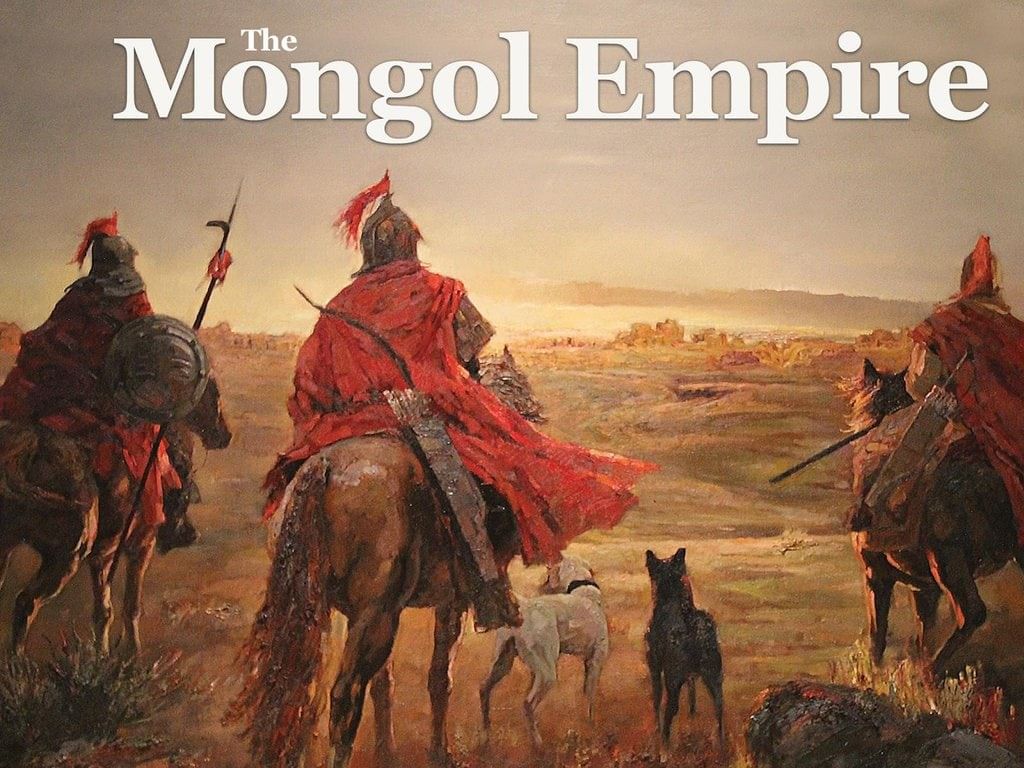Reading Practice Test - 1 | Reading for TOEFL PDF Download
The Rise of the Mongol Empire

Paragraph 1:
The Mongol Empire, which emerged in the early 13th century, became the largest contiguous empire in world history. At its peak, it stretched from Eastern Europe to the Sea of Japan, encompassing much of Central Asia, China, and the Middle East. The Mongols were initially a group of nomadic tribes who had lived in the steppes of Central Asia for centuries. However, under the leadership of Genghis Khan, they transformed into a highly organised and efficient military force, eventually conquering vast territories and establishing a network of trade routes that connected the East and West. Genghis Khan’s leadership was instrumental in uniting the disparate Mongol tribes and creating a centralised government.
Paragraph 2:
The success of the Mongol Empire can be attributed to several key factors, one of which was the Mongols' mastery of cavalry and military tactics. The Mongols developed an advanced system of communication using a network of horse riders, allowing them to relay orders and information quickly across vast distances. Their ability to move rapidly and strike unexpectedly gave them a significant advantage over their enemies. Additionally, the Mongols’ policy of religious tolerance allowed them to gain the loyalty of conquered peoples, facilitating the administration of their vast empire. The Mongols also understood the importance of trade and actively encouraged the exchange of goods, ideas, and technologies across their empire.
Paragraph 3:
Despite the vastness of the Mongol Empire, its control over its territories was not without challenges. One of the greatest challenges was maintaining communication and ensuring that the different regions of the empire were properly administered. To address this, Genghis Khan divided the empire into several regions, each governed by a trusted general or relative. This decentralised structure allowed for more effective management of the empire’s territories. However, as the empire expanded, it became more difficult to maintain unity, and after Genghis Khan's death, the empire eventually fragmented into separate Khanates, each with its own ruler.
Paragraph 4:
The legacy of the Mongol Empire is a subject of debate among historians. On one hand, the Mongols are credited with fostering cultural exchange and trade between the East and West, particularly through the famous Silk Road. On the other hand, the Mongol conquests were marked by extreme violence, and the empire’s expansion often came at the cost of widespread destruction and loss of life. Despite these negative aspects, the Mongol Empire played a key role in shaping the history of Eurasia, influencing the political, cultural, and economic development of the regions it controlled.
Q1. Which of the following is mentioned as a feature of the Mongol Empire under Genghis Khan’s leadership?
(a) The Mongol Empire was the smallest empire in history.
(b) The Mongols were initially organised into an efficient military force.
(c) Genghis Khan was a monarch who ruled a strictly centralised government.
(d) The Mongols had a policy of religious intolerance.
 View Answer
View Answer 
Ans: (b)
Solution: Under Genghis Khan, the Mongols were initially a group of nomadic tribes, but they transformed into a highly organized and efficient military force.
Q2. The word “mastery” is closest in meaning to
(a) defeat
(b) control
(c) vulnerability
(d) failure
 View Answer
View Answer 
Ans: (b)
Solution: The word "mastery" refers to control or expertise, especially in terms of the Mongols' cavalry and military tactics.
Q3. Which of the following was one of the advantages of Mongol military tactics?
(a) The Mongols relied on slow-moving infantry.
(b) The Mongols' communication network allowed for the rapid movement of troops and orders.
(c) The Mongols avoided engaging in direct combat with their enemies.
(d) The Mongols employed advanced naval strategies.
 View Answer
View Answer 
Ans: (b)
Solution: The Mongols developed a system of communication that allowed them to relay orders quickly, which gave them a significant advantage.
Q4. What can be inferred about the Mongol Empire’s policy of religious tolerance?
(a) It was primarily used to increase military recruitment.
(b) It helped maintain stability in diverse regions.
(c) It was a strategy to limit cultural exchanges.
(d) It was enforced only in the empire’s core regions.
 View Answer
View Answer 
Ans: (b)
Solution: The passage states that religious tolerance facilitated administration by gaining loyalty, implying it helped maintain stability.
Q5. What is one reason why the legacy of the Mongol Empire is debated?
(a) The Mongols brought about a complete cultural transformation of Eurasia.
(b) The Mongol Empire was the largest empire in world history.
(c) The Mongol conquests were accompanied by widespread violence and destruction.
(d) The Mongols established a centralised form of government that lasted for centuries.
 View Answer
View Answer 
Ans: (c)
Solution: While the Mongols fostered cultural exchange, their conquests were marked by extreme violence and destruction, which is a point of debate.
Q6. Which of the following is NOT mentioned as a factor in the success of the Mongol Empire?
(a). Military tactics and cavalry mastery
(b). Religious tolerance
(c). A sophisticated system of communication
(d). The creation of a democratic government
 View Answer
View Answer 
Ans: (d)
Solution: The passage does not mention the creation of a democratic government as a factor in the Mongol Empire’s success.
Q7. What is the significance of the Mongol trade routes mentioned in paragraph 2?
(a) They connected the East and West, facilitating cultural and technological exchanges.
(b) They were the primary cause of the collapse of the Mongol Empire.
(c) They helped the Mongols establish a direct trade route to the Americas.
(d) They were limited to trading only luxury goods between neighbouring regions.
 View Answer
View Answer 
Ans: (a)
Solution: The Mongol trade routes are highlighted for their role in connecting the East and West and facilitating the exchange of goods, ideas, and technologies.
Q8. According to paragraph 3, what was Genghis Khan's strategy for managing the vast Mongol Empire?
(a) He relied solely on a centralised government with absolute control.
(b) He divided the empire into regions governed by generals or relatives.
(c) He encouraged self-governance for each region.
(d) He allowed local leaders to take control over the empire’s territories.
 View Answer
View Answer 
Ans: (b)
Solution: Genghis Khan divided the empire into regions, each governed by a trusted general or relative, to manage the vast territories effectively.
Q9. The author mentions “extreme violence” in the Mongol conquests in order to
(a) emphasise the destructive side of the Mongol expansion.
(b) describe the Mongol Empire’s economic success.
(c) highlight the positive effects of Mongol rule.
(d) show that the Mongols were militarily weak.
 View Answer
View Answer 
Ans: (a)
Solution: The mention of "extreme violence" is used to emphasize the destructive aspect of the Mongol conquests, which is one side of their legacy.
Q10. Directions: An introductory sentence for a brief summary of the passage is provided below. Complete the summary by selecting the THREE answer choices that express the most important ideas in the passage. Some sentences do not belong in the summary because they express ideas that are not presented in the passage or are minor ideas in the passage.
The Mongol Empire, under Genghis Khan, was one of the largest and most powerful empires in history.
(a) The Mongol military was highly effective, especially due to their cavalry and rapid communication system.
(b) The Mongols' conquests were mainly characterised by peaceful expansion and diplomatic negotiations.
(c) Genghis Khan’s leadership and military tactics played a significant role in uniting the Mongol tribes and expanding their empire.
(d) The Mongols were particularly known for their policy of religious intolerance, which alienated many of their subjects.
(e) After Genghis Khan’s death, the empire fragmented into smaller, separate regions.
 View Answer
View Answer 
Ans: (a), (c), (e)
Solution: These sentences reflect the major ideas in the passage, such as the effectiveness of the Mongol military, Genghis Khan's leadership, and the empire's fragmentation after his death.
Vocabulary List
1. Contiguous (adj)
- Meaning: Sharing a common border; touching or adjacent.
- Context in Passage: Describes the Mongol Empire as the largest contiguous empire in world history.
- Example Sentence: The contiguous states of the Mongol Empire allowed for efficient trade routes across Eurasia.
2. Nomadic (adj)
- Meaning: Moving from place to place without a fixed home, often following resources.
- Context in Passage: Refers to the Mongol tribes living in the steppes before unification.
- Example Sentence: The nomadic lifestyle of the Mongols made them adept at rapid military campaigns.
3. Mastery (n)
- Meaning: Great skill or control over something.
- Context in Passage: Describes the Mongols' expertise in cavalry and military tactics.
- Example Sentence: Her mastery of archery rivalled that of the Mongol warriors.
4. Cavalry (n)
- Meaning: Soldiers who fight on horseback.
- Context in Passage: Highlights the Mongols' reliance on skilled cavalry for military success.
- Example Sentence: The Mongol cavalry overwhelmed their enemies with speed and precision.
5. Disparate (adj)
- Meaning: Distinct or different in kind; not similar.
- Context in Passage: Describes the Mongol tribes before Genghis Khan united them.
- Example Sentence: The team brought together disparate ideas to create a unique solution.
6. Centralised (adj)
- Meaning: Controlled or organized from a single authority or point.
- Context in Passage: Refers to Genghis Khan’s establishment of a unified government.
- Example Sentence: The centralised government ensured consistent policies across the empire.
7. Decentralised (adj)
- Meaning: Transferred or distributed authority away from a central point.
- Context in Passage: Describes the division of the empire into regions governed by trusted leaders.
- Example Sentence: The company adopted a decentralised structure to improve local decision-making.
8. Khanates (n)
- Meaning: Regions or territories ruled by a khan, a Mongol or Turkic leader.
- Context in Passage: Refers to the fragmented regions of the Mongol Empire after Genghis Khan’s death.
- Example Sentence: The Mongol Empire split into several khanates, each with its own ruler.
9. Facilitating (v)
- Meaning: Making an action or process easier.
- Context in Passage: Describes how religious tolerance aided the administration of the empire.
- Example Sentence: The new software is facilitating communication between remote teams.
10. Legacy (n)
- Meaning: Something handed down from the past, such as achievements or consequences.
- Context in Passage: Refers to the debated impact of the Mongol Empire on history.
- Example Sentence: The legacy of the Mongol Empire includes both cultural exchange and destruction.
|
14 videos|23 docs|1 tests
|
FAQs on Reading Practice Test - 1 - Reading for TOEFL
| 1. What were the main factors that contributed to the rise of the Mongol Empire? |  |
| 2. How did the Mongol Empire expand its territory so quickly? |  |
| 3. What impact did the Mongol Empire have on trade and cultural exchange? |  |
| 4. How did the Mongols administer the vast territories they conquered? |  |
| 5. What were the long-term consequences of the Mongol Empire's expansion? |  |

















